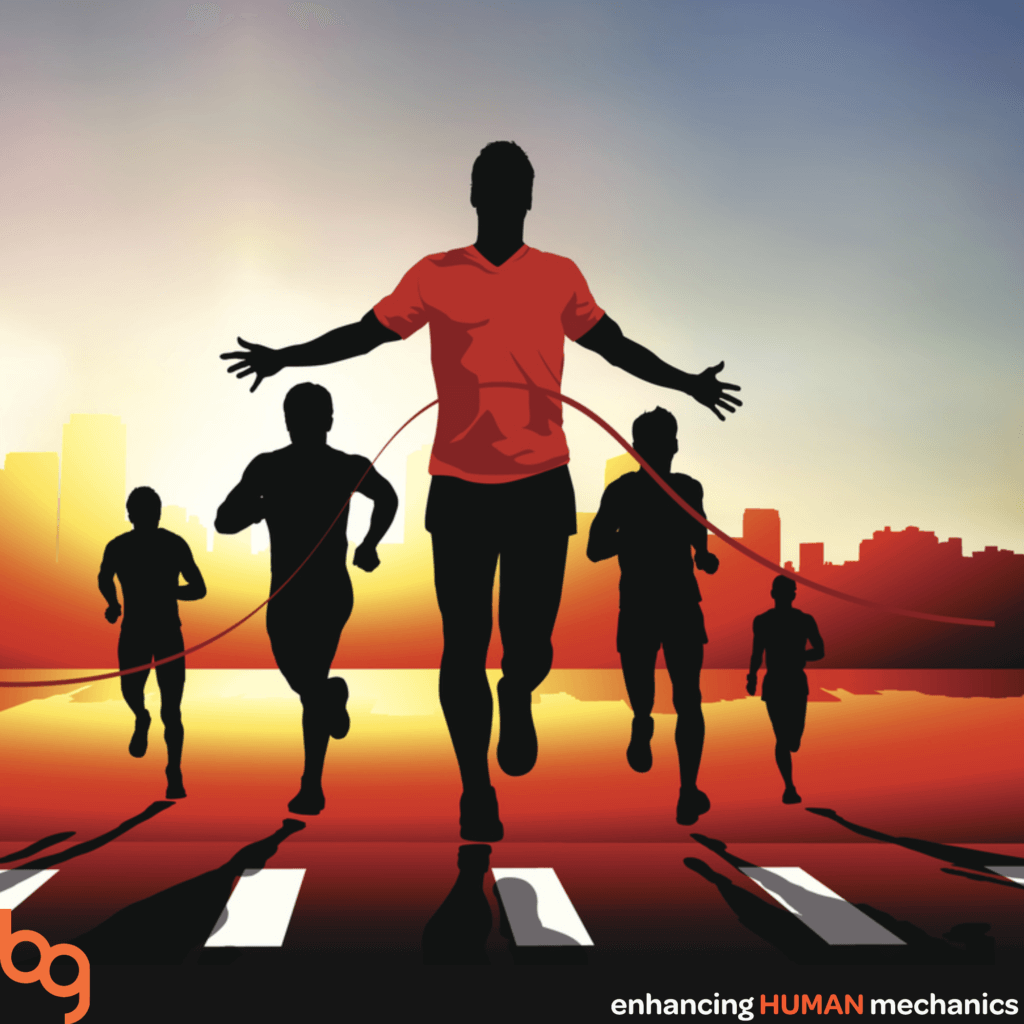To some people, just saying the word “Marathon” creates pain! You have gotten this far and we are here to help you along the way! But there is a big question that you need to ask yourself – should I push through the pain?
At Body Gears, we want to erase the phrase, “No pain, No Gain” but also erase the phrase, “Pain-Free is the Way to Be”. We want to help you learn what sensations are normal and which sensations are pathological.
Running 26.2 miles is going to be hard on your body. You are absolutely going to feel the burn, experience chaffing, and maybe lose a toenail. But where do you draw the line between feeling the burn and injuring yourself?
Pain is a very complex concept, but I challenge you to ask yourself these 5 simple questions to help you determine if what you are experiencing is crossing the line from acceptable sensations to pathological red flags.
- Is your pain consistent?
Do you have pain in your knee every time your heel strikes the ground? Or do you have pain every time your train after running just one mile? Or do you have occasional pain after running 20 miles?
The consistency of pain helps us learn if the pain is related to a behavior, or if your muscles/joints are just overworked. If your pain is consistent and intense – for example, every time your heel hits the ground, it may be a good idea to see your physical therapist to help you determine which movement patterns are increasing your pain.
- Is your pain position or activity related?
Do you have pain days after a short run with just relaxing on the couch and laying in bed, or do you have pain at the deepest part of a squat? Pain that is position or activity related may be related to muscle soreness or a movement dysfunction exacerbated as you train.
For example, if you are running the marathon and are a heel striker, it would make sense that your foot may hurt after a long run with even just walking – your pain is related to the activity of walking/running and the position of your foot in dorsiflexion. However, if your foot hurts when you are laying on your back and sitting and your last long run was a week ago, something more serious may be going on.
Try tracking your pain and determining what you are doing when it bothers you. If there is a commonality of a certain position or activity, try adjusting those things to see if your pain changes. If your pain does not have a pattern, come see your physical therapist to check it out.
- How would you describe your pain?
Let’s play the vocabulary game – without using the word “hurt” or “pain”, how would you describe your symptoms?
Achy, sore, heavy, dull, deep, bruised, tired, tight, annoying, fatigued, twinging – these words may be more related to muscle soreness. You better believe you WILL be sore if you are training for a marathon! As long as these sensations are not super intense and they dissipate with rest, these may be safe sensations.
Sharp, shooting, burning, hot, stinging, tingling, numb, throbbing, twisted, ripping, clunking, stabbing – these words may indicate a more severe injury ranging from muscle damage, tendon, cartilage, ligament, or joint. If you are consistently using these words to describe your symptoms while training for a marathon you should see your physical therapist to have it investigated further.
- Does your pain wake you up at night?
Do you wake up in the middle of the night with intense pain? Night pain is a RED FLAG and you should have your pain investigated. Pain with an insidious onset that is not related to activity or position could indicate a serious pathology.
It is important to note that pain at night that is related to falling asleep in a bad position is not as severe as unexplainable night pain.
- Are you nervous about your pain?
Listen to your body! If something feels more than “off” and you get the “heebie-jeebies” its OK to have it checked out. There is no shame in listening to your body and being concerned – better safe than sorry!
We hope these 5 questions can help you during your training period allowing you to reach your optimum level without injury trailing behind you. Be proactive, be healthy, and keep on running!
Authored By: DR. MEGHAN SIMONETTI-DETERS PT, DPT, MSHA, FMS-CERT, WOMEN’S HEALTH SPECIALIST
If you liked this article please give us feedback and join the conversation. We would love to hear your suggestions on other science, anatomy, or movement topics you’d like to learn more about! Find us on Facebook, Instagram, SoundCloud, and Twitter @BodyGearsPT.






